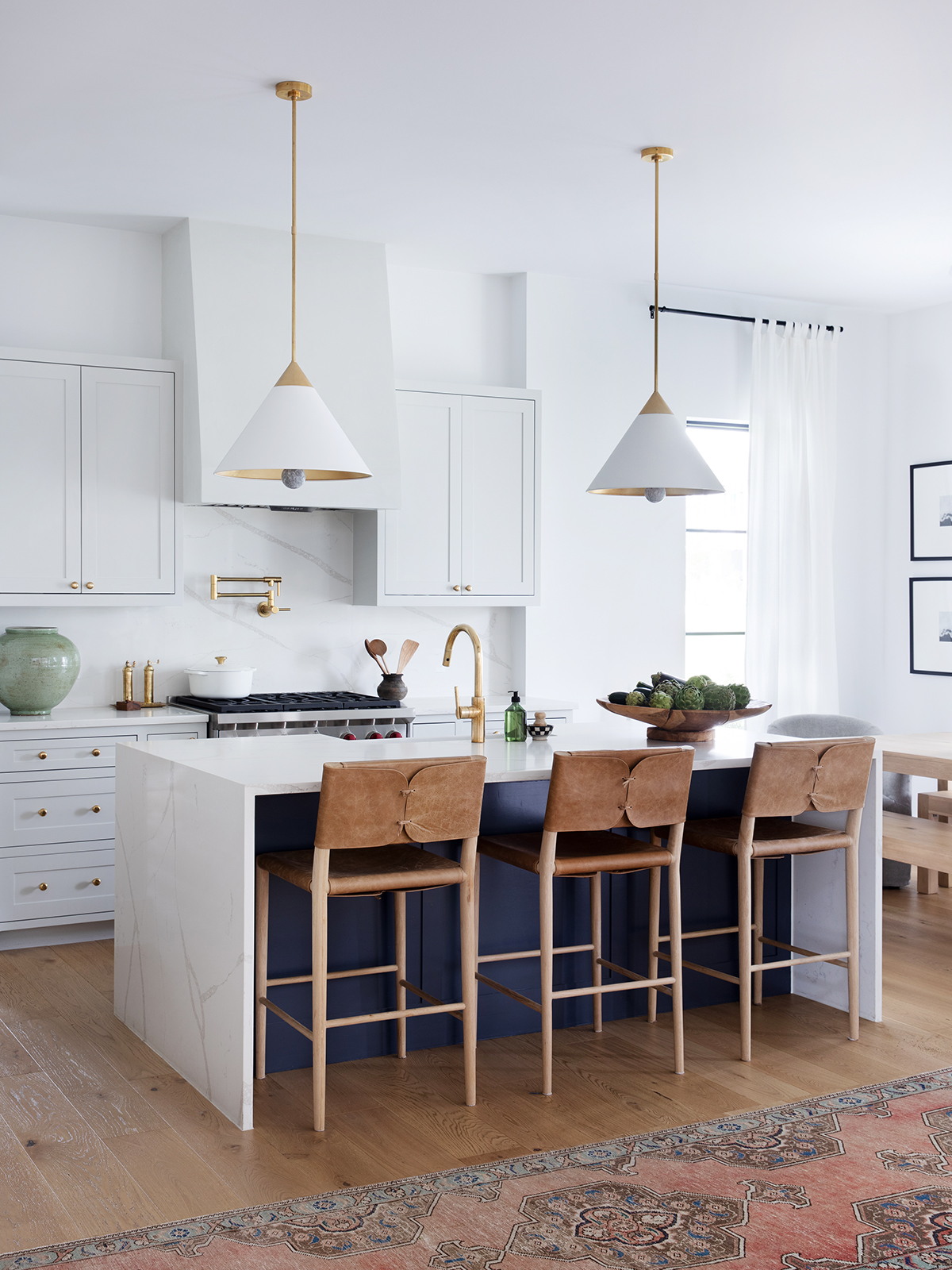We may earn revenue from the products available on this page and participate in affiliate programs.
Budget-friendly and kitchen renovation rarely appear in the same sentence—unless you’re discussing resurfacing kitchen cabinets. Reimagining your existing door and drawer fronts is the quickest, lowest commitment, least expensive way to give your kitchen an impactful makeover. So if yours are simply looking blah (the color yawn-worthy, the hinges loose, the hardware outdated) but are solidly constructed, there’s no need for a gut job, according to Jessica Taylor of Frances Harvey, a design studio known for historic home revivals in Austin. Instead, Taylor says, harness the power of paint, veneer, or stain to DIY a kitchen cabinet facelift—no sledgehammer necessary.
Here’s What Resurfacing Kitchen Cabinets Involves
Resurfacing is a redo without a reno—you’re updating the cabinets’ aesthetic without disturbing the structure of the original cabinet boxes. Think: painting, staining, or adding a layer of veneer, plus perhaps swapping out hardware or upgrading the hinges.
What to Consider Before Committing to Resurfacing Your Kitchen Cabinets

The Cost
Most significantly, you’ll spare your budget the serious blow that comes with investing in fresh fronts or entirely new cabinets. According to HomeAdvisor, the average resurfacing project will cost you somewhere between $1,984 and $4,486, while the price of refacing your cabinets (aka replacing the fronts entirely) is notably steeper: anywhere from $4,000 to $9,500. And a total kitchen remodel? For a 200-square-foot kitchen with full-size appliances in, say, Dallas, you’re looking at $15,000—as a starting point.
The Quality of Your Existing Cabinets
Another thing to keep in mind when weighing whether to resurface your kitchen cabinets, says Taylor: the integrity of the boxes. Ask yourself the following questions. Are they made of solid hardwood or a stable plywood material? Does the current layout make sense in the space? If you’re going to replace the countertop eventually, will your existing cabinets support the weight? If you answer yes, yes, and yes, then resurfacing is a smart option.
The Future
“Resurfacing cabinets can significantly update the look and feel of your space without sending piles of cabinet boxes to the landfill,” Taylor points out. Later generations will surely appreciate it. Another, nearer-term reason to go the resurfacing route is if your home is about to hit the market and your current cupboards aren’t going to be a crowd-pleaser. “Painting your cabinetry a timeless color can significantly contribute to others feeling at home in the space,” says Taylor. (She recommends a calming cream, which will show less dirt than bright white.)
Types of Kitchen Cabinet Resurfacing
Paint

What can a coat of paint do? In Domino Land, everything. “A fresh coat of paint and some fun cabinet hardware can bring most dated and drab kitchens into 2023,” says Taylor. Lately, we’re partial to subtle pinks, sophisticated beiges, and rich reds.
Even if it’s a little tedious, painting your kitchen cabinets yourself is one of the most budget-friendly forms of resurfacing, and the most forgiving if your fronts aren’t made of a material you love. We’ve got a step-by-step cabinet-painting guide to follow, but here’s the gist: First, prep the surfaces by cleaning, sanding, and priming. Then comes the fun part—painting!—followed by a top coat to prevent chips and stains from everyday use.
Stain

If you lucked out with solid, natural wood cabinets, another resurfacing option is to stain them. The process is a bit more involved than painting, since the old finish needs to be completely removed—usually with a harsh chemical strip—before a new stain can be applied. Still, with a stack of sandpaper, a putty knife, and a bit of patience, staining is a solid way to go if (and only if!) your cabinets are of high enough quality to withstand it.
Veneer

Veneer, very thin pieces of real wood that get mounted to your cabinet fronts, can be incredibly durable and long-lasting when applied correctly. Heed Taylor’s words of warning though: It’s not easy to DIY. “In my experience, veneer is the most complicated resurfacing process, and it’s worth weighing the cost against new cabinets,” Taylor says. (Angi puts the price at $70 to $150 for an 8-by-4-foot piece of veneer.) “Every seam must be carefully treated to prevent cracking and splitting at the edges,” she adds. Doable? Yes. Better to enlist an expert? Also yes.
